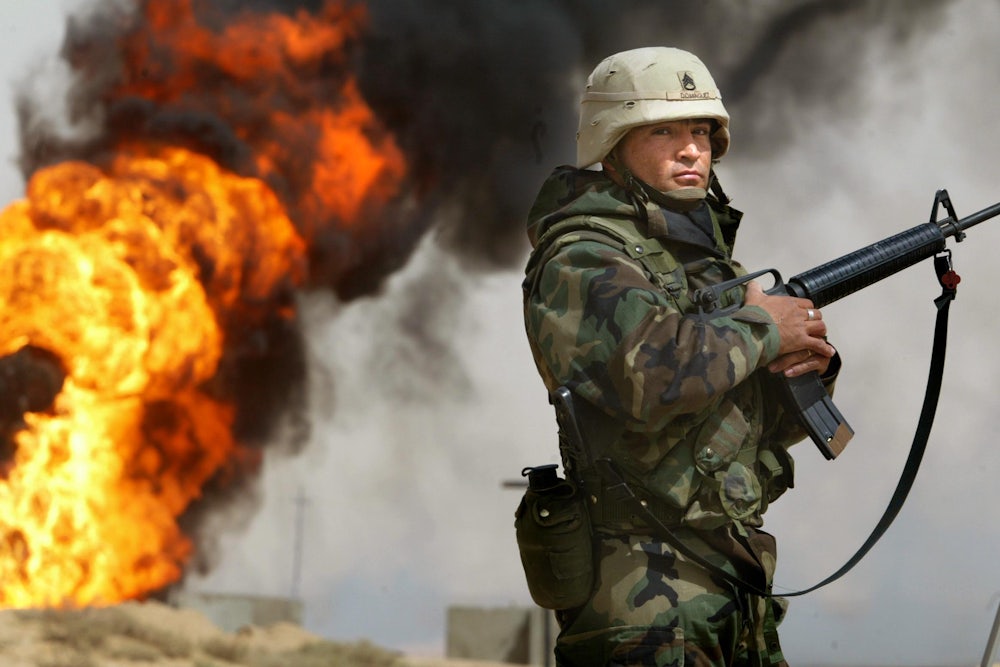The chaotic and conflict-ridden Middle East is a scene of American failure. In recent decades, the United States has lavished more resources and attention there than on any other region. It has incurred more American military deaths in Iraq than in any other war since the Vietnam War. The current state of the region, and of U.S. influence in it, doesn’t come close to representing a worthwhile return on that huge investment.
A major redirection of U.S. policy toward the Middle East is in order, and not only in the sense of correcting the worst mistakes of the Trump administration. That administration has carried to extremes an assumption that has underpinned previous administrations’ approach toward the region. That assumption, simply put, is that the U.S. must exert its power, including military might, on the side of those in the region considered good and friendly, to secure superiority or domination over those considered evil or unfriendly.
That approach might be defensible in responding to the threat of an unfriendly power achieving hegemony over the Middle East, but no such threat exists. Iran is most often mentioned as a supposed regional hegemon, but it is militarily inferior to several of its rivals, and it has the permanent handicap of being a mostly Persian and Shia nation in a region that is mostly Arab and Sunni.
One major problem with the U.S. approach of trying to prop up good over evil is that players in the Middle East do not sort readily into good guys and bad guys. The region is a tangle of cross-cutting rivalries and conflicts—of Sunni against Shia, Arabs against Israelis, Arabs against Iranians, fundamentalists against secularists, and monarchies against republics. Trying to hammer these competing interests into a U.S.-imposed imbalance has been disastrous for human security—and ignores the regional powers’ own capacity for checking each other’s emergent threats.
Exploiting regional balances of power requires far fewer American resources than the traditional, long-standing, inadequate U.S. strategy to achieve domination. Intra-regional balancing works even among those considered adversaries of the U.S. Iran and Russia are commonly put in that category, and both have helped to shore up the Assad regime during the Syrian civil war. But they also are rivals for influence in Syria, with the rivalry working against either one of them achieving destabilizing political dominance in Damascus.
Such balancing also entails engaging diplomatically with each side of a rivalry. The U.S. administration has conducted foreign relations with one hand tied behind its back by refusing to engage with certain regimes it doesn’t like. Discarding the practice of always siding with a fixed set of presumptive friends against a fixed set of adversaries means also discarding the notion that it is necessarily a U.S. interest to support “allies” in the region—where the U.S. has no formal NATO-like collective security obligations. That notion turns the whole concept of allies and interests upside down. The U.S. should have allies to advance U.S. interests, not to define what those interests are.
Rigid side-taking has impeded the ability of the U.S. to explore the areas of common interest that invariably exist even with states rightly considered adversaries. The confidence among presumed friends of the U.S. that Washington would always back them and would not deal with regional rivals has encouraged those friends to indulge in behaviors harmful both to U.S. interests and to regional stability. Thus we have a Saudi regime that gets away with the murder of Jamal Khashoggi and an Israeli government that, with expansion of settlements and threats of annexation, is hammering more nails into the coffin of the two-state solution to the Israeli-Palestinian conflict.
The principle of using, rather than vainly trying to overcome, a balance of power in the Middle East is incorporated in a new report on U.S. policy toward the region from the Quincy Institute for Responsible Statecraft. The report is grounded in a strict definition of U.S. interests in the Middle East, which ultimately must advance the security and well-being of the American people. The report contains a full set of policy recommendations—including an American military drawdown, support for a new multilateral security architecture, normalization of U.S.-Iran relations, and diplomatic efforts to end the wars in Syria and Yemen. Each of these is achievable, as long as the U.S. can get past old, stultifying, and ineffective ways of looking at power in the region.
Conventional wisdom has long held that the presence of U.S. forces in the Middle East makes America and the region more secure. This wisdom is no longer tenable, if it ever was. Given the often counterproductive effects of America’s large regional footprint, combined with its extensive arms sales and support for coercive regimes, a less militarized approach to the region is required. Preventing hostile states from establishing hegemony in the Middle East doesn’t warrant a major U.S. military presence in the Middle East; rather, it will require a major shift of American political thought and respect for international law.
